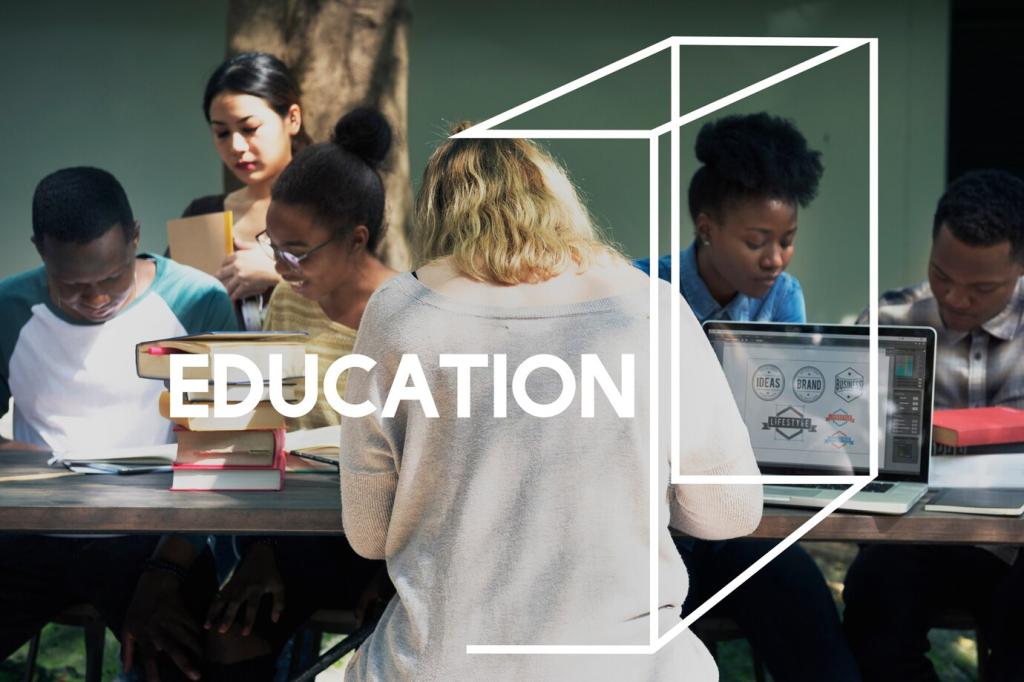Understanding Abstract Algebra: A Friendly Gateway
Chosen theme: Understanding Abstract Algebra. Step into a world where structure, symmetry, and elegant logic turn familiar arithmetic into a powerful language for patterns. Stay curious, share your thoughts, and subscribe for deeper journeys across groups, rings, and fields.
From Numbers to Structures: The Foundations
Abstraction frees us from specific numbers and reveals repeatable patterns. When you study the structure behind operations, you can transfer insights between puzzles, proofs, and problems, building a toolkit that works across many mathematical frontiers and real applications.
From Numbers to Structures: The Foundations
Axioms are not cage bars but scaffolding. They tell us what must hold, and within that framework we build possibilities. Share a favorite axiom set that fascinates you, and tell us why it sparks your curiosity today.


Groups and Symmetry: Seeing Order Everywhere
Square symmetries and the dihedral story
Rotate a square, then flip it. Do the same moves in a different order and notice the difference. Those relations form the dihedral group, a small universe that teaches composition, inverses, and how algebra records symmetry with crisp, memorable rules.
Rubik's Cube as a living group
Every twist is a group element; sequences compose and undo each other. Solvers learn commutators without naming them. If you have a favorite algorithm, share it below and describe what structural insight it gave you about the cube’s hidden order.
A gallery of everyday symmetries
Wallpaper patterns, snowflakes, and musical canons echo group ideas. Once you start spotting them, commutativity and cycles appear in walks, schedules, and designs. Post a photo or example where symmetry surprised you, and invite friends to guess the underlying structure.

Homomorphisms demystified
A homomorphism carries addition or multiplication faithfully across worlds. It simplifies problems by translating them into friendlier settings. Share an example where mapping a messy object to a simpler target suddenly made a proof flow naturally and convincingly.
Isomorphism: same structure, new skin
Two objects can look different yet be structurally identical. Recognizing isomorphism saves effort and sparks insight. Tell us about a time you realized two problems were secretly the same, and how that recognition changed your approach completely.
Kernels, images, and insight
The kernel measures what collapses to zero; the image records what survives. Together they frame classification. Try computing both in a favorite example, then post your result and explain what structural secrets those two sets revealed.
A subgroup lattice sketches relationships among symmetries. Even for small groups the picture brims with stories. Draw one for a familiar group and share how it clarified normality, index, and why some quotients behave so elegantly under composition.
Substructures, Quotients, and Theorems That Bind It All
Ideals select what we collapse in a ring, giving tractable quotient worlds. Factor rings turn complicated arithmetic into cleaner landscapes. Comment with a ring you find intriguing, and suggest an ideal that produces an unexpectedly useful quotient.
Substructures, Quotients, and Theorems That Bind It All

Why the general quintic resists radicals
The story is not about cruelty but symmetry. The associated Galois group is too wild to be tamed by radicals. If this intrigues you, subscribe for our gentle series unpacking the history, ideas, and emotional triumphs behind the proof.

Constructibility and geometric dreams
Ancient compass and straightedge problems hide field extensions. Doubling the cube, trisecting angles, and squaring the circle all encode algebraic impossibilities. Share which classical problem captured your imagination and how field degrees clarified its fate.

A human thread: Évariste Galois
On the eve of a duel, Galois sketched ideas that reshaped algebra. His letters bristle with urgency and clarity. Reading them reminds us that breakthroughs marry courage, community, and meticulous thought. Join the discussion and reflect on that legacy.
Your Learning Roadmap: Practice, Curiosity, Community
Construct Cayley tables, hunt for subgroups, and test homomorphisms. Alternate concrete computations with proof sketches. Post one exercise you solved this week, describe the key insight, and invite others to compare strategies and celebrate progress together.
